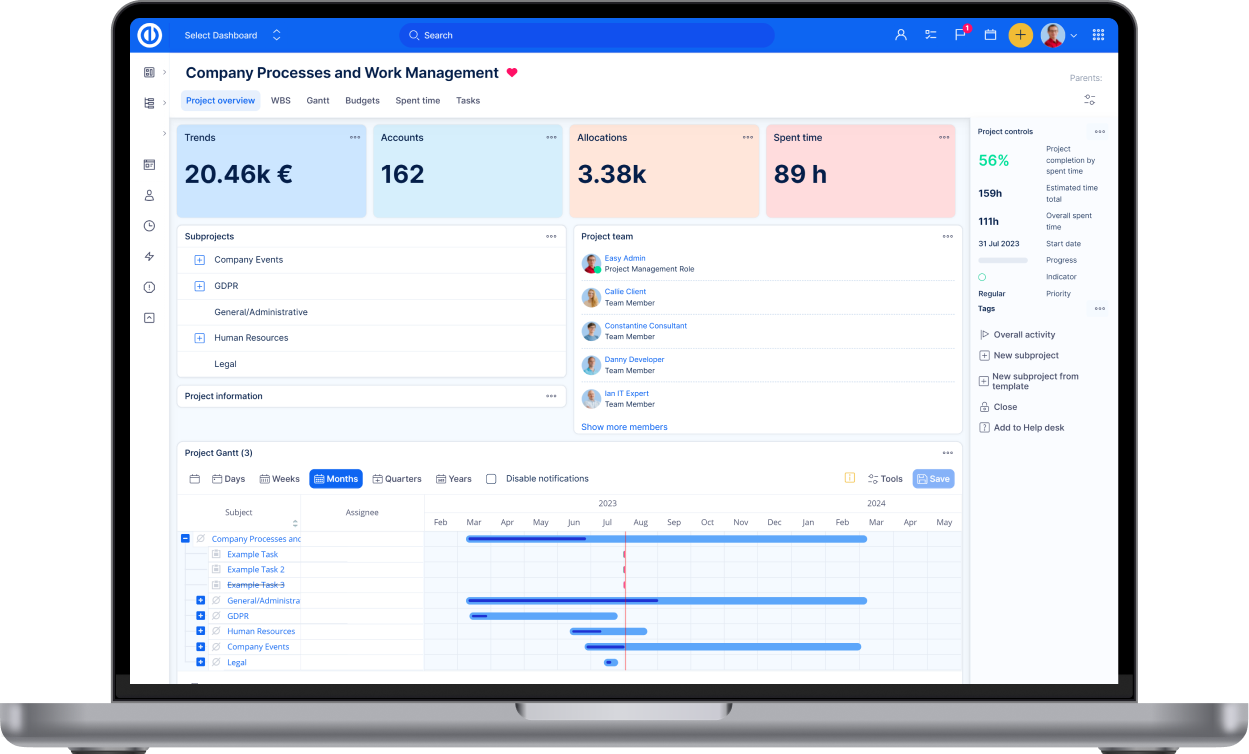The AI adoption curve: Where companies really are in 2025
AI is no longer a futuristic concept—it's a present-day power play reshaping how companies compete, grow, and operate. But while many businesses have jumped on the AI wave, only a few know how to turn potential into performance. Do you know where your organization stands?

Table of contents
Unlocking AI's true potential
From experimentation to enterprise-wide transformation
The AI adoption curve
Stage 1: Early experimentation and limited use
Stage 2: Integrating into some processes and blending
Stage 3: Transformative and strategic adoption of AI
Navigating the obstacles and leveraging what works in AI adoption
1. Lack of understanding and knowledge gaps
2. Data privacy and security concerns
3. High cost of implementation and training
4. Integration with existing systems
5. Lack of qualified professionals
The strategic imperative for AI adoption in 2025 and beyond
AI ROI strategies for high-performing companies
TL;DR
In 2025, over three-quarters of organizations use AI, but only ~1% have mature deployments delivering real value. Closing this gap requires executives to treat AI as a long-term strategic priority, with strong leadership, robust governance, quality data, and talent investment to align AI with business goals and measurable ROI.
Unlocking AI's true potential
AI has captivated the corporate world, promising unprecedented efficiencies and new avenues for growth. Yet, as organisations move through this transformation, many find it hard to bridge the distance between vision and execution.
In 2025, it’s time to get a clear picture of AI adoption—the stages companies are in, the barriers holding them back, and the strategies that truly deliver results. So, where do organisations really stand on the AI adoption pyramid?
The future of competitive advantage rests on understanding this journey and moving up it faster.
From experimentation to enterprise-wide transformation
The adoption of AI continues its momentum, with more than three-quarters of organisations now reporting AI use in at least one business function, according to a McKinsey study. The same study reveals that specifically, 71% of organisations are regularly using AI in at least one business function by July 2024.
Organisations are mainly applying AI in marketing and sales, product and service development, service operations, software engineering, and IT—areas previously identified by McKinsey as those where AI can deliver the greatest value.
Despite this widespread adoption, only a small fraction of companies have truly matured their AI initiatives. A complementary McKinsey survey found that only 1% of company executives consider their AI rollouts mature.
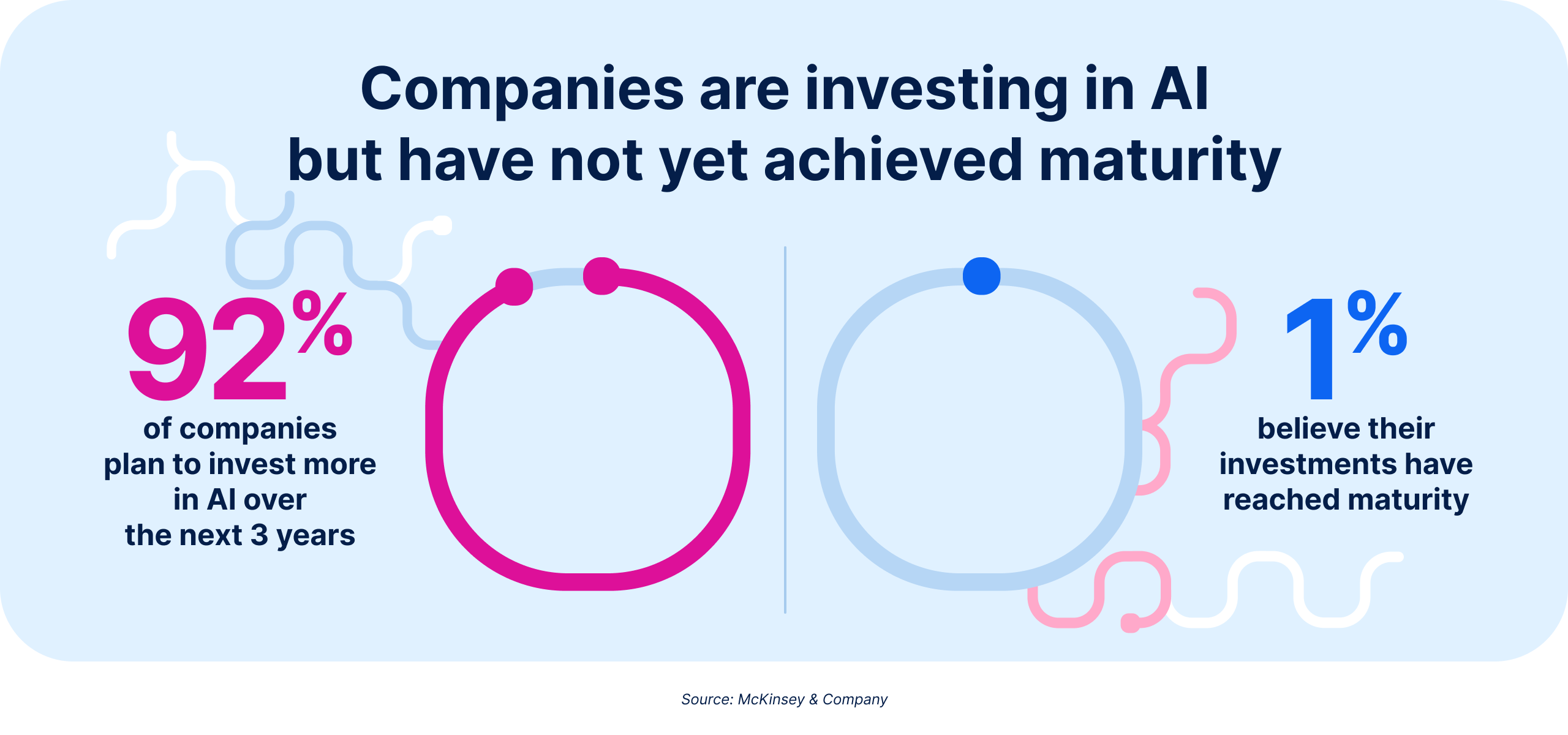
This suggests that while adoption is broad, it is often not yet deep, with the focus shifting from the initial hype of AI to building foundational innovations responsibly.
Gartner’s 2025 Hype Cycle for Artificial Intelligence notes that AI is entering the Trough of Disillusionment, as organisations gain a better understanding of its potential and limitations. While technologies such as foundation models, synthetic data, edge AI, and generative AI remain highly visible, they are now shifting from hype toward more pragmatic adoption paths that will define their real business value over the next decade.
The same Gartner study proved that despite an average investment of $1.9 million in AI projects in 2024, fewer than 30% of AI leaders said their CEOs were satisfied with the returns. Many organisations are still struggling to prove the real business value of AI.
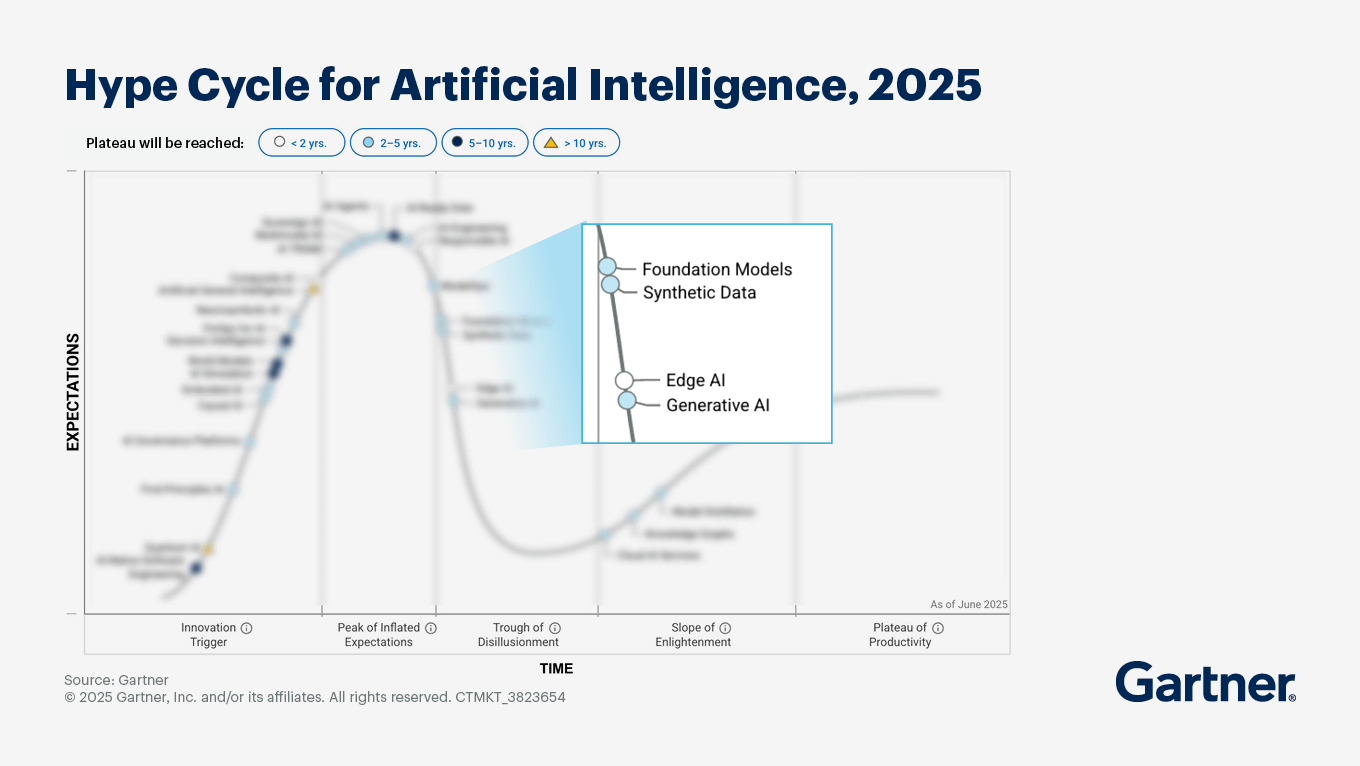
Those with lower digital maturity often fail to identify appropriate use cases and enter projects with unrealistic expectations. Meanwhile, more advanced companies face a different set of challenges—such as a lack of skilled talent and limited AI understanding across their teams.
Moreover, integrating AI knowledge into AI adoption roadmaps ensures that preparedness and capability development are aligned with the phased rollout of AI initiatives, embedding readiness into the adoption process.
The AI adoption curve
Drawing inspiration from typical technology adoption lifecycles, here’s a map of where companies currently stand:
Stage 1: Early experimentation and limited use
- Many organisations, especially small and medium-sized enterprises, are in this initial phase. 58% of SMEs have adopted AI, but only 12% of tech leaders report extensive use of AI beyond ChatGPT.
- Implementation often involves self-service and off-the-shelf solutions, utilising existing LLMs and no-code platforms.
- The most impactful use cases here include content and communication automation (customer service, marketing, internal documentation), data analysis and reporting, and process optimisation (workflow automation).
Stage 2: Integrating into some processes and blending
- At this stage, companies are starting to use AI in specific business processes—for example, by changing how frontline staff work or building new user interfaces. According to a McKinsey study, 21% of respondents using AI report fundamentally redesigning at least some automation workflows.
- This stage frequently involves a "blend" strategy, building some capabilities internally while purchasing others externally, particularly where some components require customisation and others can be standardised.
Stage 3: Transformative and strategic adoption of AI
- This is where real change happens—AI starts to reshape how the whole company works. Redesigning workflows, often through the deployment of AI agents that automate or enhance decision-making, has the biggest impact on whether the organisation sees a boost in EBIT from AI.
- Senior leadership engagement is critical. A CEO’s oversight of AI governance is most correlated with higher self-reported bottom-line impact, particularly for larger companies. Effective AI implementation requires top-down commitment and successful change management.
- Organisations in this stage are more likely to implement a comprehensive set of adoption and scaling best practices, including tracking well-defined KPIs, establishing clear road maps, and creating dedicated teams.
- They pursue strategic investment approaches beyond simple build-or-buy decisions, including building proprietary system, and also proactively manage a growing set of AI-related risks.
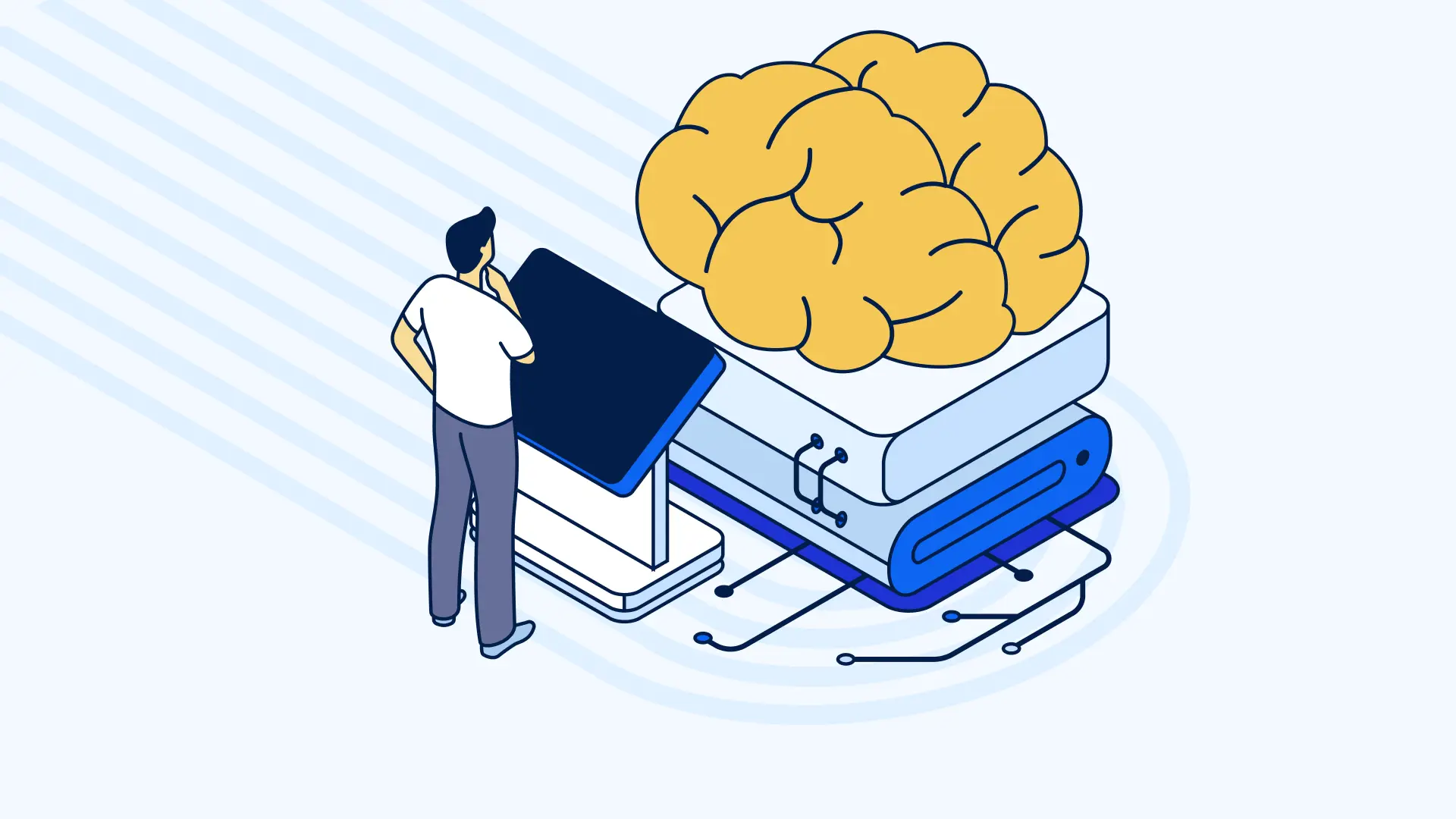
Navigating the obstacles and leveraging what works in AI adoption
Companies face several persistent challenges on their AI adoption journey:
1. Lack of understanding and knowledge gaps
Only 12% of SME decision-makers report a very good knowledge of AI technologies, with 52% having a basic understanding and 9% very little. Low-maturity organisations struggle to identify suitable use cases and exhibit unrealistic expectations. This gap can hinder the full exploration and implementation of advanced AI-driven solutions.
2. Data privacy and security concerns
These rank high for both adopters and non-adopters, especially in the EU due to stringent regulations like GDPR and the new EU AI Act. Privacy and security of user data are cited as a top concern by 53% of product managers (according to a Gartner research). Organisations exhibit a lack of true trust in AI agents' ability to operate without human oversight due to concerns about errors and security.
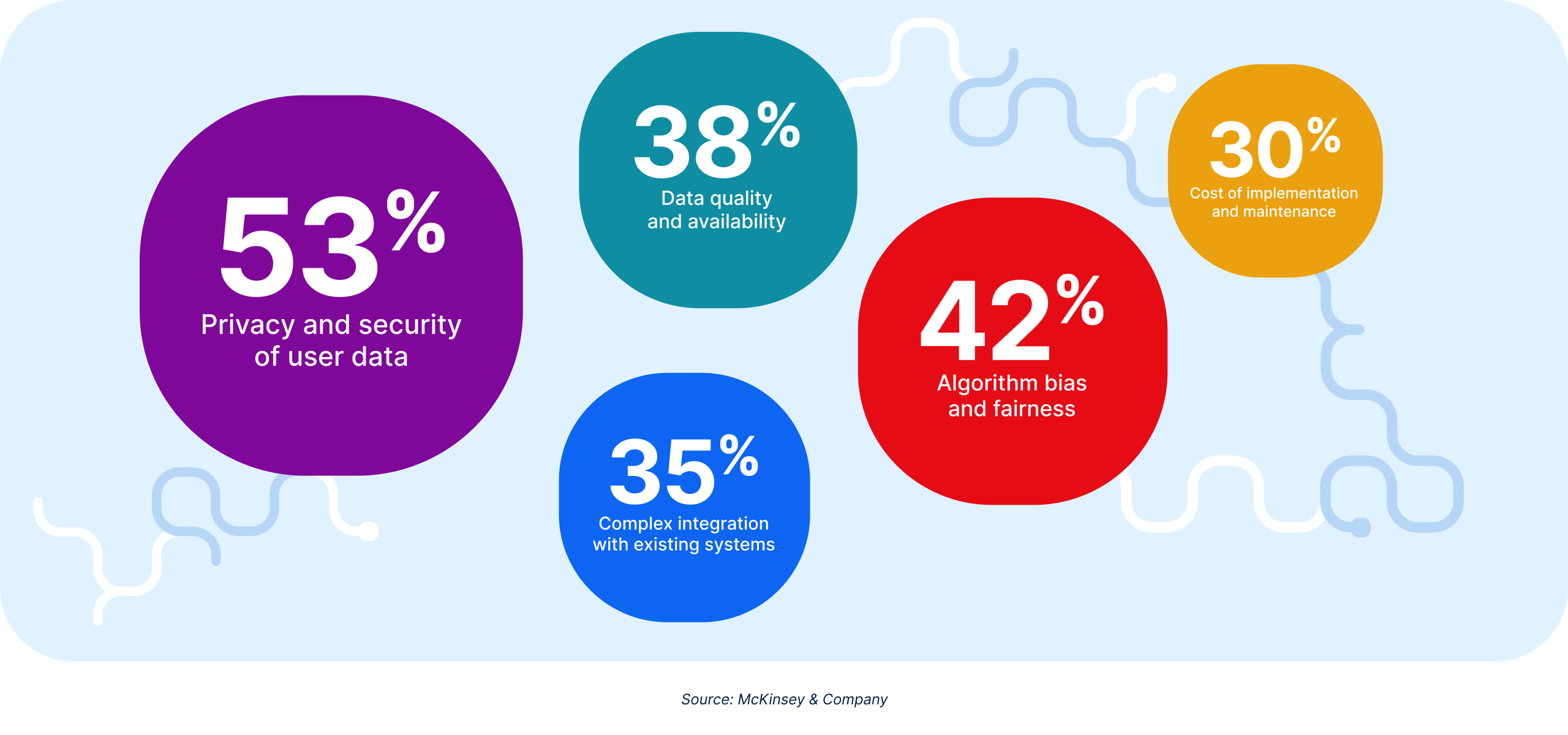
3. High cost of implementation and training
This remains a significant obstacle, particularly for non-adopters. The perceived investment in AI tools, infrastructure, and training puts off businesses with limited resources.
4. Integration with existing systems
A major hurdle, with many adopters reporting difficulties aligning AI with their current technological infrastructure and legacy systems. 35% of product managers mentioned complex integration with existing systems as a concern (according to a Gartner Peer Community paper).
5. Lack of qualified professionals
Half of the organisations using AI, as interviewed in the McKinsey paper, expect to need more data scientists in the next year. 50% of product teams are considering hiring dedicated AI product managers. Also, mature organisations struggle to find skilled professionals.
The strategic imperative for AI adoption in 2025 and beyond
To get real, lasting value from AI, companies need a smart, long-term strategy. The top performers in AI—those seeing the biggest returns—stand out because they use AI across the business, have strong oversight, manage risks carefully, and tailor solutions to their specific needs.
On the other hand, Gartner warns that 57% of organizations say their data isn’t “AI-ready,” and without robust data management, AI projects will struggle or invite unnecessary risk.
Executives are advised improve data quality, architecture, and access for AI (e.g., ensuring data is appropriately labeled, governed, and available to feed AI use cases). Additionally, there is a push to measure AI outcomes against business KPIs. Gartner predicts that by 2024–2025, a majority of AI investments will be tied to explicit performance metrics, reflecting the need to prove ROI.
Companies that are leaders in AI adoption are nearly twice as likely to follow best practices like bias checks, audits, and data protection. The takeaway? Clear ownership, solid governance, and aligning AI with business goals are must-haves for success.
AI ROI strategies for high-performing companies
In 2025, while over 70% of companies report using AI in at least one function, only a small fraction have matured their efforts to achieve enterprise-wide transformation and measurable ROI.
Major blockers to AI success include low digital literacy, poor data readiness, integration challenges, and lack of skilled talent—issues that disproportionately affect less mature organizations.
High-performing companies distinguish themselves through strong leadership involvement, strategic investments, robust governance, and by aligning AI initiatives with business KPIs.
Need help with AI adoption? Whether you're shaping your AI adoption roadmap, building automated workflows or implementing AI agents—our team is ready to guide you. Contact our sales team and get expert support tailored to your projects.



